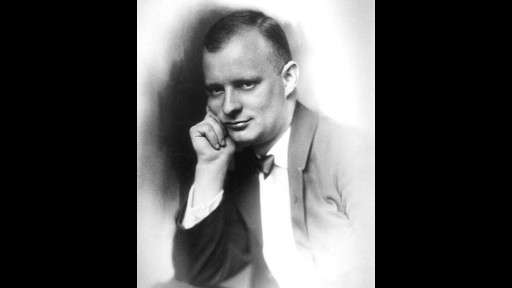
Hérodiade

Paul Hindemith left his native Germany in 1938, after Nazi propagandists branded him a “standard-bearer of musical decay” and banned his music. After a short time in Switzerland, Hindemith moved to the United States in 1940 and secured a teaching position at Yale University, where he remained until 1953.
While in America, Hindemith reconnected with the heiress and arts patron Elizabeth Sprague Coolidge, who had commissioned the Concert Music for Piano, Brass, and Two Harps in 1930. Coolidge had funded an intimate auditorium at the Library of Congress in Washington, D.C., and the works she solicited from Bartók, Stravinsky, and others expressly for that compact stage resulted in some of the most important small-ensemble repertoire of the twentieth century. She approached Hindemith in 1944 about creating a ballet to be performed at the Coolidge Auditorium by Martha Graham; the subject was to be the Greek myth of Medea, with a detailed scenario sketched by Graham herself. Hindemith accepted the commission, but chose an entirely different subject, basing his work on a poem by Stéphane Mallarmé. The new work, Hérodiade, came together during two weeks of Hindemith’s summer vacation in New Haven, Connecticut. Graham and another member of her company gave the debut performance on October 30, 1944, on the same program that introduced Aaron Copland’s Appalachian Spring.
Mallarmé worked on the unfinished poem Hérodiade around 1864. The portion of the text that inspired Hindemith’s score takes the form of a dialogue between Herodias and her nurse. Historically, Herodias was the queen of Galilee in the first century A.D., and the mother of Salome (who, in some accounts, shares the name Herodias). The mother and daughter are infamous for their role in the execution of John the Baptist, a drama that formed the basis of Oscar Wilde’s Salome and the Richard Strauss opera of the same name. Mallarmé, for his part, described the title character of Hérodiade as neither a literal representation of Herodias or Salome but rather “a purely imaginary creature entirely independent of history.”
Hindemith’s use of text in Hérodiade was unusual in that he set the poetry to music, syllable-for-syllable, using purely instrumental forces to create an “orchestral recitation.” A note accompanying the score explains that this approach “would free the composer from the limitations of the human voice without renouncing its power of declamation and articulation.” The note goes on to explain the link between the musical technique and the poetic style:
"The melodies could be colored in ever changing tints, and the entire range from the double bass’ lowest tones to the flute’s highest could be used. Such a many-sided expansion of musical melody, although lacking the human directness of vocal expression but adorned with the polished and brittle artificiality of instrumental motion, would it not be the adequate means of accompanying Mallarmé’s wonderfully exalted but likewise polished, brittle and artificial creation?"
Hérodiade consists of eleven short movements, grouped into four main sections separated by short pauses. According to the publisher’s program note, “The Nurse is characterized by a soft tune in the string instruments while Hérodiade’s extremely erratic, expressive and symbolistic sentences are given to all the instruments, either in soloistic or ensemble form.”
Contribute Now.
We need your support to continue sharing music with people everywhere, completely free of charge.